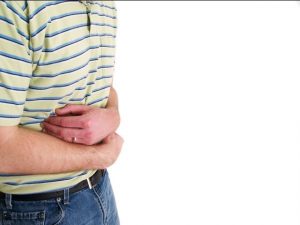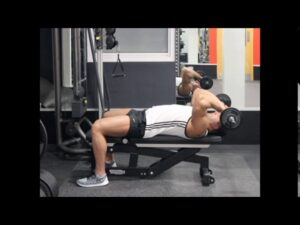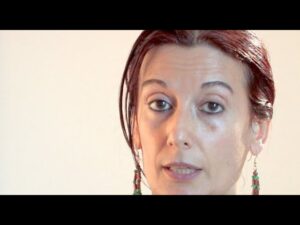One unexpected and unwanted outcome from modernization of society is the increasing prevalence of diabetes mellitus due to changes in lifestyles. Diabetes is a lifelong disease which has no cure, causing terrible suffering among patients and tremendous strain on healthcare systems. Watch this episode of Medicurio to learn more about the cause, symptoms, and treatments available for diabetes. Rarer forms of Diabetes: Gestational Diabetes: Similar to Type 2 diabetes as some insulin resistance occurs, but only occurs during pregnancy. In most cases, gestational diabetes disappears once the baby is delivered, but some women progress into Type 2 diabetes even after birth. Likely due to various hormones released during pregnancy that interfere with the insulin signalling pathway, although the true cause is still being researched. Babies born to mothers with untreated gestational diabetes exhibit signs of Type 2 diabetes from birth. MODY (Maturity Onset Diabetes in Youth): Diabetes due to mutations in a MODY gene: a gene associated with either beta cell maturation, glucose storage and release, or insulin receptors. Specific symptoms and treatments vary based on the mutation, but all exhibit high blood glucose. There are currently 11 MODY genes known, but there are likely more that are undiscovered or too rare. Cool Links to check out: Diabetes Research Journals for up to date research on diabetes: http://diabetes.diabetesjournals.org/ http://www.canadianjournalofdiabetes.com/ Diabetes Canada: https://www.diabetes.ca/ Juvenile Diabetes Research Foundation (for Type 1 diabetes) http://www.jdrf.ca/ American Diabetes Association: http://www.diabetes.org/ Trivia: The first mention of diabetes occurred in Ancient Egypt over 3000 years ago, which described a sickness that caused excessive urination. This was likely Type 1 diabetes, as Type 2 diabetes only became more common when society and lifestyles became more modernized. One of the first ways to diagnose diabetes was to urinate on the ground and see if ants were attracted to the urine (which they would if it contained sugar). This was discovered in Ancient India. Insulin was discovered in Canada by Dr. Frederick Banting and his student Charles Best at the University of Toronto in 1920. They isolated the hormone from beagles and later injected diabetic beagles with their isolated substance, realizing that the hormone lowered blood glucose. This saved an innumerable amount of Type 1 diabetics’ lives, who rarely survived past childhood. Banting got the 1923 Nobel Prize in Medicine and Physiology that was shared with his supervisor, Dr. John Macleod. This decision infuriated Banting, who thought that Best should have shared the prize with him, and shared his cash award with Best. Initially, insulin was isolated from pig pancreas and then administered to patients. Over time, scientists managed to insert the gene for insulin into bacteria and yeast, which produced the hormone on a massive scale and allowed for more patients to be treated. Now, many different types of insulin are available. By slightly modifying the gene inserted into bacteria/yeast, and therefore modifying the insulin protein, scientists can control how fast insulin is broken down in the body. Fast-acting insulin can be administered right after a meal, while slow-acting insulin is administered before sleeping so that blood glucose levels can be maintained overnight.

Diabetes Mellitus and Insulin
- Post author:
- Post published:May 24, 2021
- Post category:Uncategorized
- Post comments:0 Comments
You Might Also Like

DEXA – Dual Energy X-Ray Absorptiometry

What Do Proteins Do?

Part 7 – Internal organs – Vocabulary of People – important words – Learn Arabic – تعلم العربية

Basal Metabolic Rate (BMR) – Explained – Part 1

Power Clean technique: How Much Should You Power Clean – Power Cleans for beginners

Honey Nutrition Video – 1

Top 3 Best Amino Acid Supplements

Acne | Nucleus Health

Our Brain – Human Anatomy -Lesson for Kids- School Science Video

Effects of Testosterone on Men

health education on ethinylestradiol and diazepam

What is Diabetes Mellitus? – Understanding Diabetes – Diabetes Type 1 and Type 2

What is Shoulder Arthritis?

Semen Analysis

Pendlay Row (Bent Over Row): Strength + Size in Back, Traps and Lats

Gynecological Surgeries Video – 2
Diabetes

What is Diarrhea?

Wrestling Video – 4

Homicide Psychology/ Psychiatry Video – 1

How to lose weight – Top 20 foods for weight loss – lose weight fast

Best way to workout chest

Echocardiogram Animation

Blood Test Procedure | Nuffield Health

Muscle Building Workout & Squats Video – 34

Skeleton Anatomy and Physiology Review Bones 01

Lying Close Grip Barbell Triceps Extension

A simple exercise to prevent Alzheimer’s Disease

pregnancy diet chart | in 1st trimester | in animation

21 Inner thigh Exercises – Adductor Variations

Yoga Counciling Video – 2

Donkey Kicks

5 MIN DAILY STRETCH – An everyday, full body routine

Cool Down Exercises After Workout

How To: Leg Extension (Cybex)

Herbal Nutrition Video – 2

How To: Deep Barbell Back Squat

Plank Knee Touches

Fasting + Post Meal Blood Sugar Readings

How to Check Your Blood Sugar

OMEGA 3 | The “KING” of Bodybuilding SUPPLEMENTS

